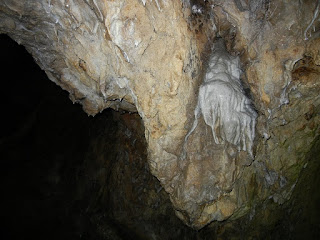Today is Monday and we are on our way home. We were in Dublin
for the last three days. We had a nice hotel in Parnell Square, a not so nice area. We were two
blocks from O’Connell Street, which is a major pedestrian area. But as soon as
you left the pedestrian area, the street became pretty dodgy. Lots of closed
and shuttered shops and lots of garbage. We arrived in the evening and this was
our first impression of Dublin and it was not very positive. On our first full day
we did some more exploring. The pedestrian sections we visited were very
busy. The highlight of the day for me
was a visit to the Guinness Storehouse. Our impression of the city improved.
Our second day, we ventured across river for more exploring.
We had lunch at the Temple Bar in the Temple Bar district. This is the center of the ‘tourist’
pub area. It was nowhere near as authentic as the pub we visited in Ballyvaughn,
but there was beer, food and ‘trad’ music. We did a tour of Trinity College and
saw the Book of Kells and the Old Library. The Book of Kells is described as
Ireland’s greatest treasure. It is an illuminated manuscript of the gospels created
by monks in the 800’s. Illuminated means that the monks added art to enhance
the text. It was an interesting display and the book is quite remarkable.
So we will be touching down in St John’s in about 30
minutes. Our vacation has been composed of very different components. The
cycling tour in Germany was a lot of fun. It was slow-paced and relaxing. The
scenery was beautiful. We left Germany at the beginning of a heat wave and the
cool wet weather of Ireland came as a relief. We probably tried to pack too
much into our Irish vacation with too much time in the car travelling between sites. We were often exhausted at the end of a day. If we were to visit Ireland
again, I think we would concentrate on the south and west.



















































